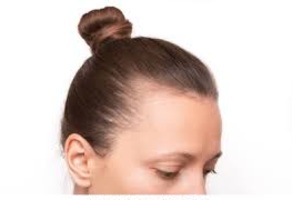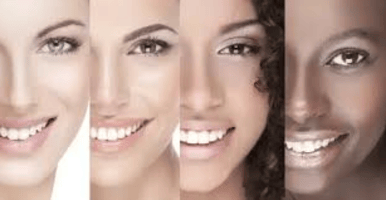Have you recently noticed your forehead appearing larger or your temples becoming more prominent? You might be asking yourself, ‘why is my hairline receding?’ This concern affects millions of people worldwide, and understanding the underlying causes is the first step toward addressing this common issue.
A receding hairline can impact self-confidence and raise questions about your overall health, making it important to explore this topic thoroughly. Many individuals notice changes in their hairline around their late twenties or early thirties, though it can happen earlier or later. The gradual retreat of the hairline is often a natural part of aging, but several factors can accelerate or trigger this process.
If you’re wondering why your hairline is receding, this comprehensive guide will help you understand the causes, explore potential solutions, and learn how to maintain healthy hair regardless of your current situation. Let’s dive deeper into understanding why hairlines recede and what steps you can take to address this common concern.

Understanding Hair Growth Cycles
Before exploring why hairlines recede, it’s essential to understand how hair naturally grows. Each hair on your scalp follows a cycle consisting of three main phases:
Growth Phase (Anagen)
Hair actively grows around half an inch every month during this stage. This stage, which usually lasts two to seven years, establishes the longest your hair can grow.
Transition Phase (Catagen)
During this brief phase, which lasts roughly two to three weeks, follicles shrivel and hair growth stops.
Resting Phase (Telogen)
Lasting approximately 3 months, this is when hair follicles rest before eventually shedding the hair to make way for new growth.
Understanding these cycles helps explain why we naturally lose about 50-100 hairs daily. When you’re experiencing a receding hairline, this normal process becomes disrupted, with more hairs entering the resting phase and fewer returning to the growth phase.
Common Causes of a Receding Hairline
If you’re wondering, ‘why is my hairline receding?’, There could be a number of reasons for this shift:
Genetics and Hereditary Factors
The most common cause of a receding hairline is androgenetic alopecia, commonly known as male or female pattern baldness. This hereditary condition affects the way your hair follicles respond to hormones in your body.
Male Pattern Baldness
Typically begins with hair thinning at the temples, creating an M-shaped hairline that gradually recedes further back.

Female Pattern Hair Loss
Often presents as overall thinning rather than a distinct receding hairline, though frontal recession can occur. Your genetics largely determine how sensitive your hair follicles are to dihydrotestosterone (DHT), a hormone derived from testosterone. When follicles are sensitive to DHT, they gradually shrink and produce thinner, shorter hairs until they eventually stop producing hair altogether.

Hormonal Changes and Imbalances
Hormones have a major impact on hair growth and loss. A receding hairline may result from a number of hormonal changes, including:
- Pregnancy and Childbirth: Many women experience hair loss after giving birth due to dropping estrogen levels.
- Menopause: Declining estrogen levels can lead to thinning hair and recession at the hairline.
- Thyroid Disorders: Both hypothyroidism and hyperthyroidism can cause hair loss, including at the hairline.
- Polycystic Ovary Syndrome (PCOS): This condition can increase androgen levels, potentially leading to hair loss.
Lifestyle Factors
Your daily habits and lifestyle choices can significantly impact your hairline:
- Stress: Prolonged stress can cause hair follicles to enter the resting phase too soon, which increases hair loss.
- Nutrition and Diet: Iron, zinc, protein, and vitamins B and D are among the vital nutrients that deficiencies in them might cause hair loss.
- Hair styling practices: Hair follicle tension can result in traction alopecia, a kind of hair loss brought on by tight hairstyles that tug on the hairline.
- Heat Styling and Chemical Treatments: Excessive use of hot tools and harsh chemical treatments can weaken hair and damage follicles.
Medical Conditions and Medications
A receding hairline can result from or be exacerbated by a number of medical disorders and drugs:
- Alopecia Areata: An autoimmune condition when the immune system targets hair follicles.
- Scalp Infections: Fungal infections like ringworm can cause hair loss if left untreated.
- Medications: Hair loss is a side effect of certain drugs used to treat heart problems, cancer, depression, high blood pressure, and arthritis.
Age-Related Changes
Naturally, hair grows more slowly and becomes finer as we age. Many people notice their hairline gradually receding as part of the normal aging process:
- Changes in Hair Follicle Productivity: Follicles produce thinner, less pigmented hairs as we age.
- Reduced Cell Regeneration: The body’s ability to regenerate cells, including those in hair follicles, diminishes with age.

Signs Your Hairline Is Receding
Wondering if your hairline is actually receding? Look for these common signs:
- Widening Part: It looks like your part is wider now than it was.
- Temple Recession: Hair at the temples (sides of the forehead) begins to thin and recede, often creating an M-shaped hairline.
- Higher Forehead: Your forehead appears larger as the hairline moves backward.
- More Visible Scalp: Especially noticeable under bright lighting.
- Excessive Shedding: Finding more hairs than usual on your pillow, in the shower drain, or on your brush.
Treatment Options for a Receding Hairline
If you’re concerned about your receding hairline, various treatment options are available:
Non-Prescription Treatments
- Minoxidil (Rogaine): An over-the-counter medication applied directly to the scalp that can help slow hair loss and potentially stimulate regrowth.
- DHT-Blocking Shampoos: These contain ingredients that may help reduce DHT levels on the scalp.
- Scalp Massage: Frequent scalp massage may encourage hair development by boosting blood flow to the hair follicles.
- Low-Level Laser Therapy: Devices that use red light therapy have shown promise in stimulating hair follicles.
Prescription Treatments
- Finasteride (Propecia): An oral medication that blocks the conversion of testosterone to DHT. It’s typically prescribed for men and requires a doctor’s prescription.
- Spironolactone: Women who experience androgenetic hair loss may occasionally take to block androgen.
- Dutasteride: Similar to finasteride but prevents the conversion of testosterone to DHT by both forms of the enzyme.
Advanced Medical Procedures
- Hair Transplantation: Hair follicles are surgically moved from thickly growing places to balding or thinning areas.
- Platelet-Rich Plasma (PRP) Therapy: Involves infusing your own blood’s concentrated platelets into your scalp to promote hair growth.
- Scalp Micropigmentation: A tattooing technique that creates the appearance of a closely shaved head or adds density to thinning areas.
Natural Approaches to Managing a Receding Hairline
If you prefer natural approaches to addressing your receding hairline, consider these options:
Nutritional Support
- Protein-Rich Diet: Since protein makes up the majority of hair, a nutritious diet is necessary for hair growth.
- Essential Fatty Acids: Found in fish, flaxseeds, and walnuts, these fats support scalp health.
- Iron and Zinc: Hair loss may result from deficiencies in these nutrients.
- Vitamins B, C, D, and E: These vitamins support healthy hair growth in a number of ways.
Herbal Remedies
- Saw Palmetto: May help block DHT production.
- Pumpkin Seed Oil: Studies suggest it might help with hair regrowth in men with male pattern baldness.
- Rosemary Oil: Some research indicates it could be as effective as minoxidil for certain types of hair loss.
- Ginseng: Includes ingredients that might activate hair follicles.
Stress Management
Including stress-reduction strategies in your routine may be beneficial because stress can lead to hair loss:
- Frequent Exercise: Exercise enhances circulation and lowers stress hormones.
- Meditation and Mindfulness: These practices can lower stress levels and promote overall wellbeing.
- Adequate Sleep: Inadequate sleep can raise stress hormones which can lead to hair loss
- Yoga: Combines physical activity with mindfulness for effective stress reduction.
Styling Tips for a Receding Hairline
While addressing the underlying causes of your receding hairline, these styling tips can help you feel more confident:
- Shorter Hairstyles: Often more flattering for receding hairlines as they create the illusion of thicker hair.
- Textured Cuts: Adding texture can make hair appear fuller and can disguise thinning areas.
- Strategic Styling Products: Volumizing products can add the appearance of fullness, while heavy products can make hair look thinner.
- Hair Fibers: Keratin fiber-containing products can simulate fuller hair by temporarily filling in sparse regions.
Prevention Strategies for Hair Loss
While you can’t change your genetics, you can take steps to maintain healthy hair and potentially slow the progression of a receding hairline:
- Gentle Hair Care: Steer clear of harsh chemical treatments, heavy heat style, and hard brushing.
- Balanced Diet: Ensure you’re getting all the nutrients your hair needs to grow strong and healthy.
- Regular Scalp Care: Maintain a healthy and clean scalp to encourage the best possible conditions for hair growth.
- Protect From Sun Damage: UV rays can damage hair follicles, so wear a hat when spending extended time in the sun.
- Regular Check-ups: Address any underlying health conditions that might contribute to hair loss.
When to See a Doctor About Your Receding Hairline
While some hair loss is normal, certain situations warrant medical attention:
- Patchy or Sudden Hair Loss: May be a sign of an underlying illness.
- Itching, Burning, or Pain: These symptoms suggest a potential scalp condition requiring treatment.
- Hair Loss Accompanied by Other Symptoms: Such as fatigue, unexpected weight changes, or skin problems.
- Significant Emotional Distress: If your hair loss is causing anxiety or depression; professional support can help.
Embracing Change and Building Confidence
While treatment options can help address a receding hairline, learning to embrace changes in your appearance is also important:
- Focus on Overall Health: Prioritize your overall wellbeing rather than fixating solely on hair loss.
- Build a Support Network: Make contact with those who are going through similar struggles.
- Explore Different Looks: Experimenting with different styles or even embracing baldness can be empowering.
- Practice Self-love: Remember that hair loss doesn’t define your worth or attractiveness.
FAQs
At what age does hairline start receding?
While hairlines can begin receding at various ages, most people notice the first signs between their late twenties and late thirties. However, some individuals may experience a receding hairline as early as their late teens, while others might not see changes until their forties or fifties.
The timing largely depends on genetic factors, hormonal balance, and overall health. If you have a family history of male or female pattern baldness, you might notice changes earlier than those without such genetic predisposition.
Is a receding hairline always permanent?
A receding hairline isn’t always permanent. When caused by temporary factors like stress, nutritional deficiencies, certain medications, or hormonal fluctuations (such as those during pregnancy), hair loss including a receding hairline can be reversible once the underlying cause is addressed.
However, when the recession is due to genetic factors (androgenetic alopecia), the process is generally progressive but can be slowed or managed with appropriate treatments. Early intervention typically yields better results, so consulting with a dermatologist or trichologist at the first signs of recession is advisable.
How can I tell if my hairline is naturally maturing or actually receding?
Distinguishing between a maturing hairline and a receding one involves observing the pattern and pace of change. A maturing hairline typically involves slight, symmetrical recession at the temples, creating a more defined M-shape, and usually stabilizes after moving back about 1-2 cm from the adolescent hairline. This natural process often occurs in the mid-to-late twenties.
In contrast, a receding hairline associated with male pattern baldness continues to move backward over time, may be asymmetrical, and is often accompanied by noticeable thinning. Additionally, if the recession is accompanied by hair loss on the crown or general thinning, it’s more likely to be progressive hair loss rather than simple maturation. Comparing current photos to those from a few years ago can help track changes.
Can women experience a receding hairline?
Yes, women can experience a receding hairline, although it’s less common and typically presents differently than in men. Female pattern hair loss usually manifests as overall thinning across the top of the scalp with preservation of the frontal hairline.
However, some women do experience frontal recession, particularly after menopause when estrogen levels decline. Women with certain hormonal conditions like polycystic ovary syndrome (PCOS) may also notice hairline recession due to elevated androgen levels. Additionally, traction alopecia from tight hairstyles can cause hairline recession in women.
Does stress cause a receding hairline?
Stress can indeed contribute to a receding hairline through a condition called telogen effluvium, where significant physical or emotional stress pushes hair follicles into the resting phase prematurely. This typically causes generalized shedding, including along the hairline, about 3-6 months after the stressful event.
Chronic stress can also exacerbate genetic hair loss by increasing inflammation and disrupting hormonal balance. Additionally, stress-related habits like hair pulling or aggressive styling can damage the hairline. While stress alone rarely causes permanent hairline recession, it can trigger or worsen underlying conditions.
Conclusion…
If you’ve been wondering, ‘why is my hairline receding?’, you now have a comprehensive understanding of the potential causes and available solutions. Remember that a receding hairline is often a natural part of aging influenced by genetics, hormones, lifestyle, and overall health.
While a receding hairline may impact your appearance, it doesn’t have to diminish your confidence or quality of life. With the right approach and support, you can navigate this common challenge while maintaining a positive self-image and overall wellbeing.



